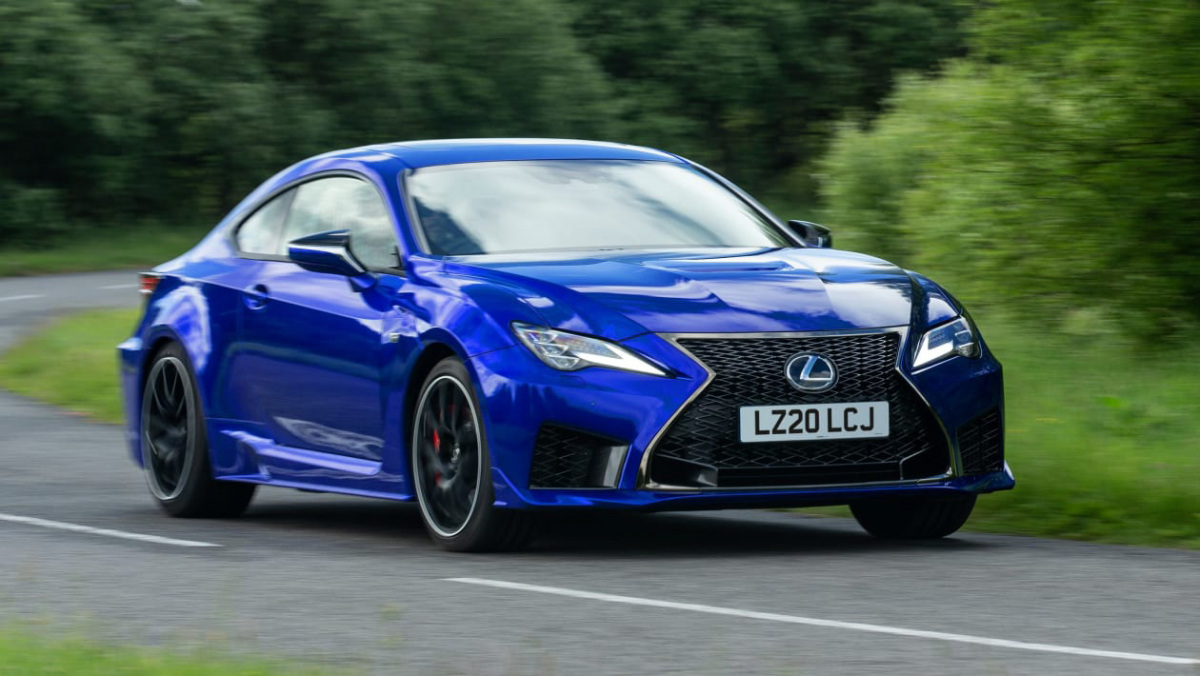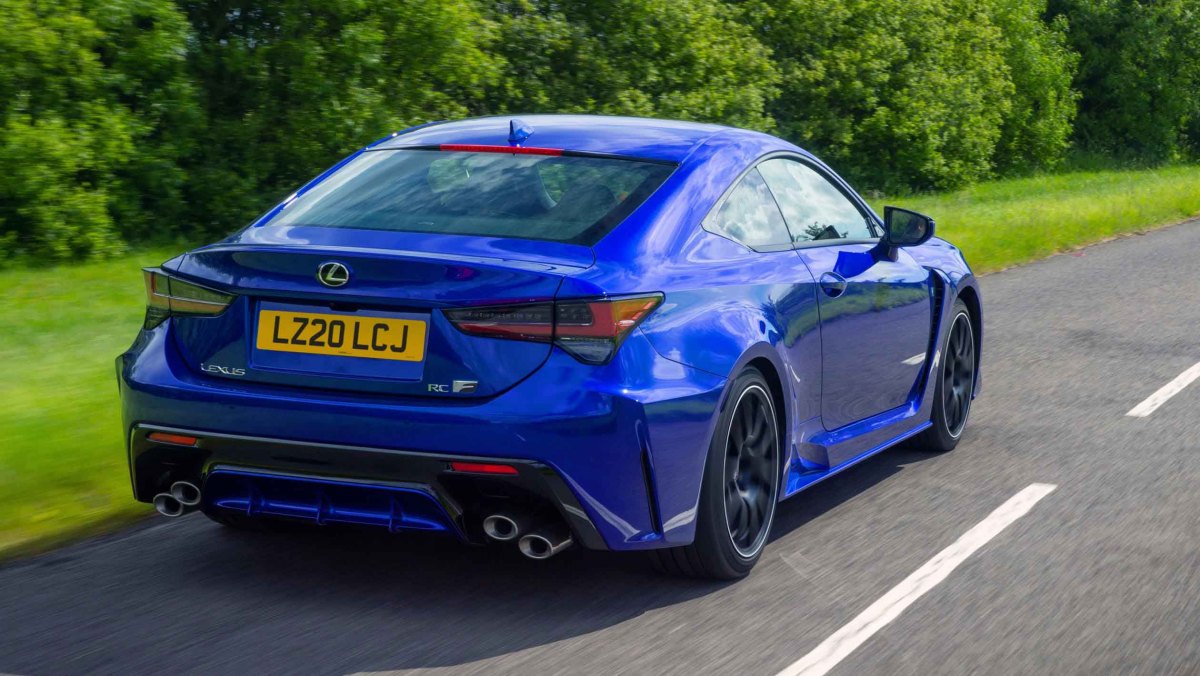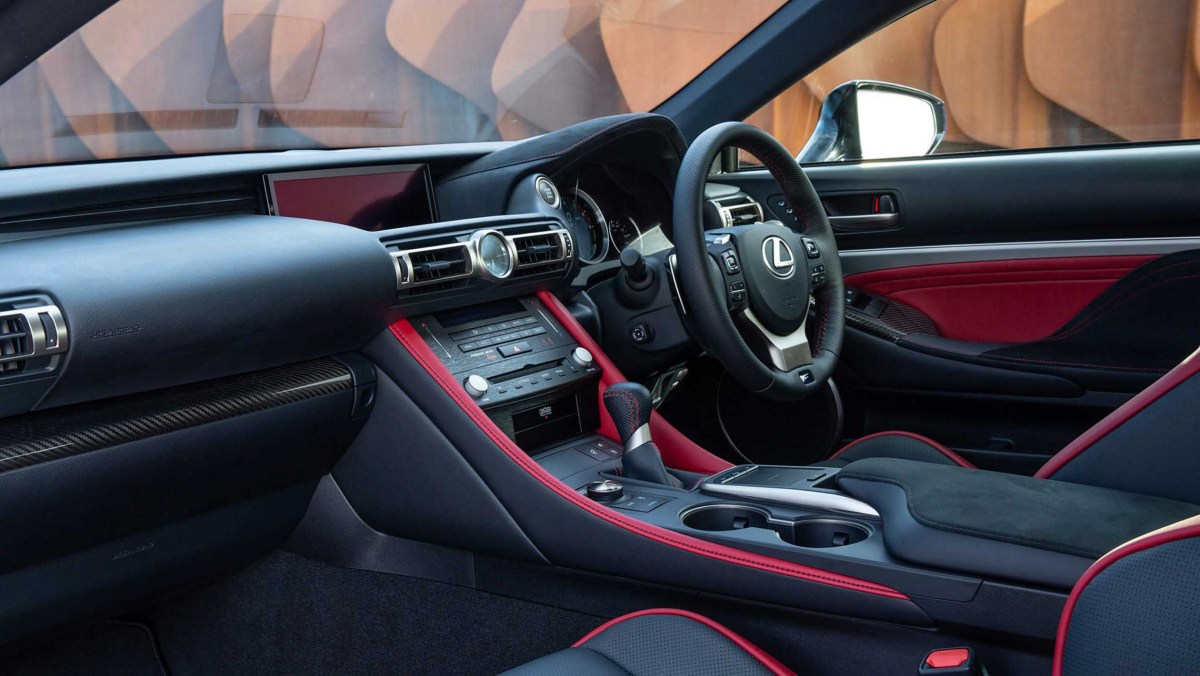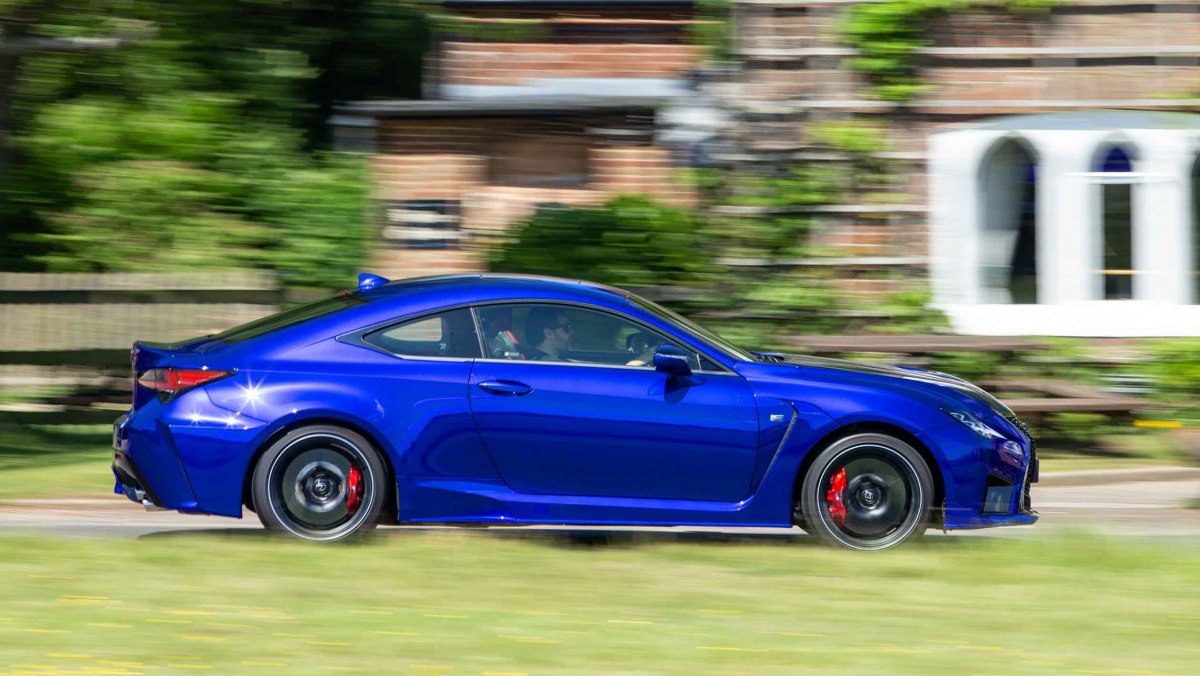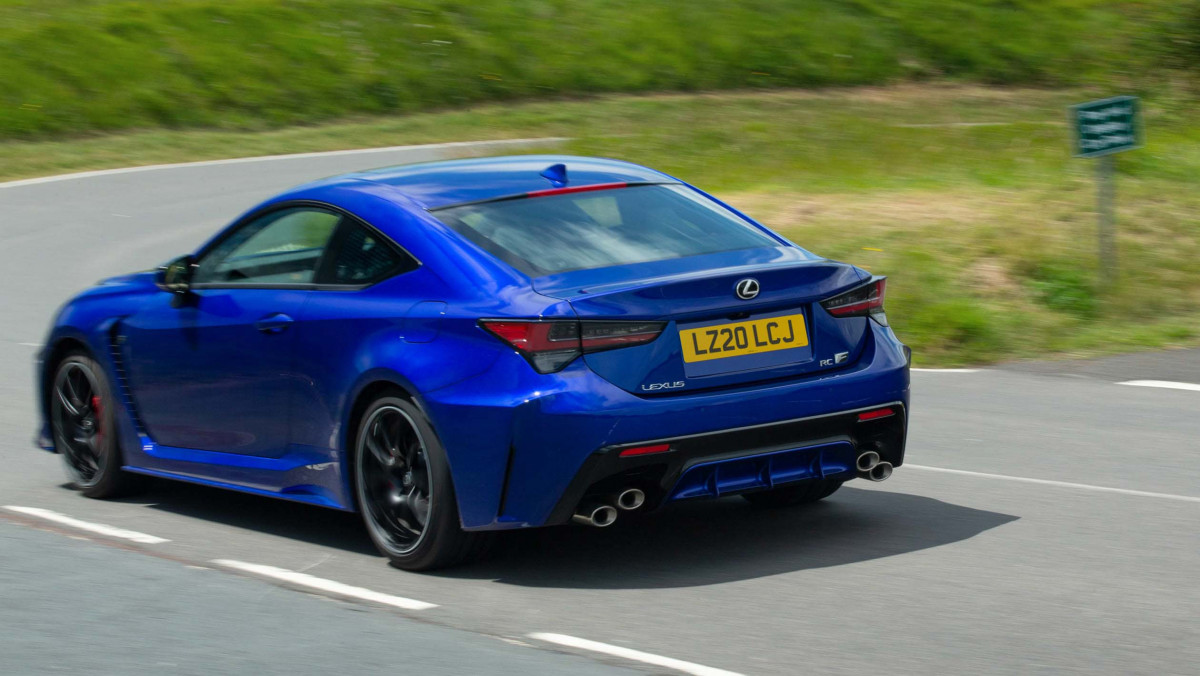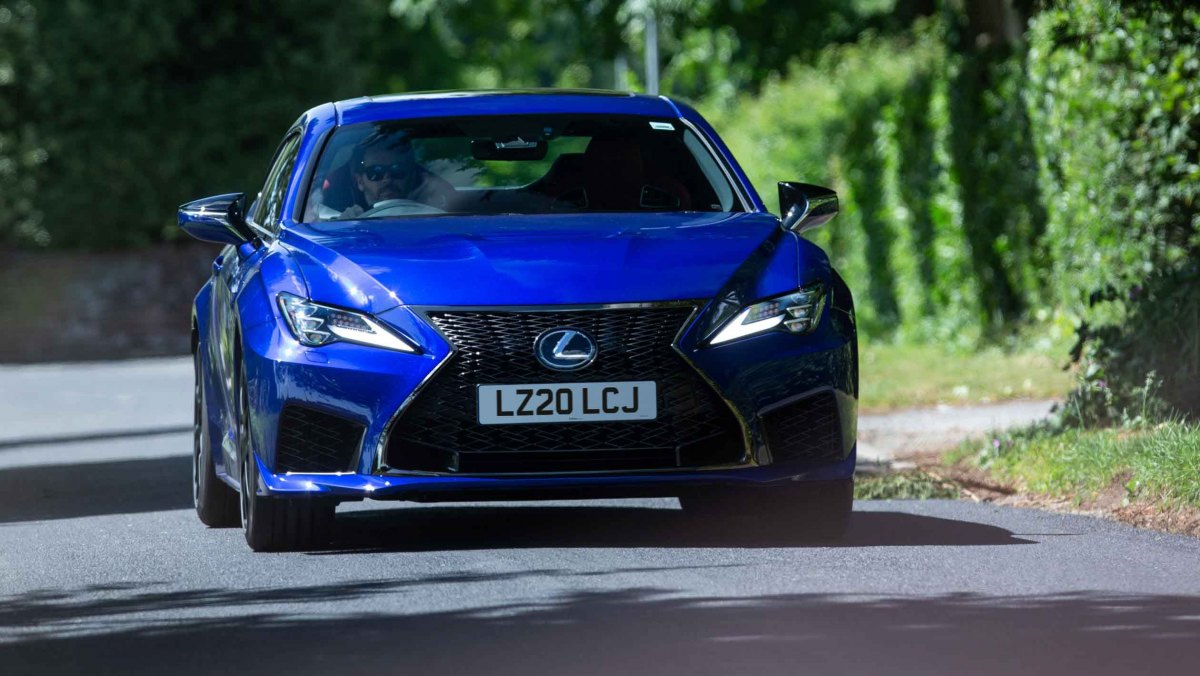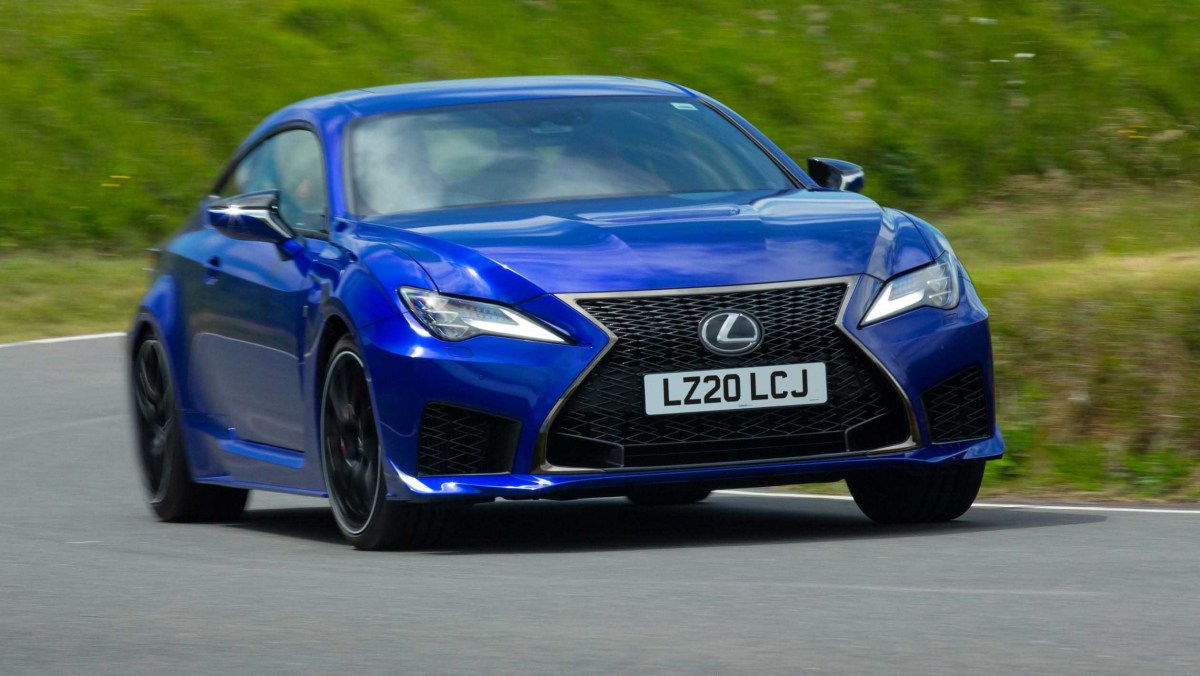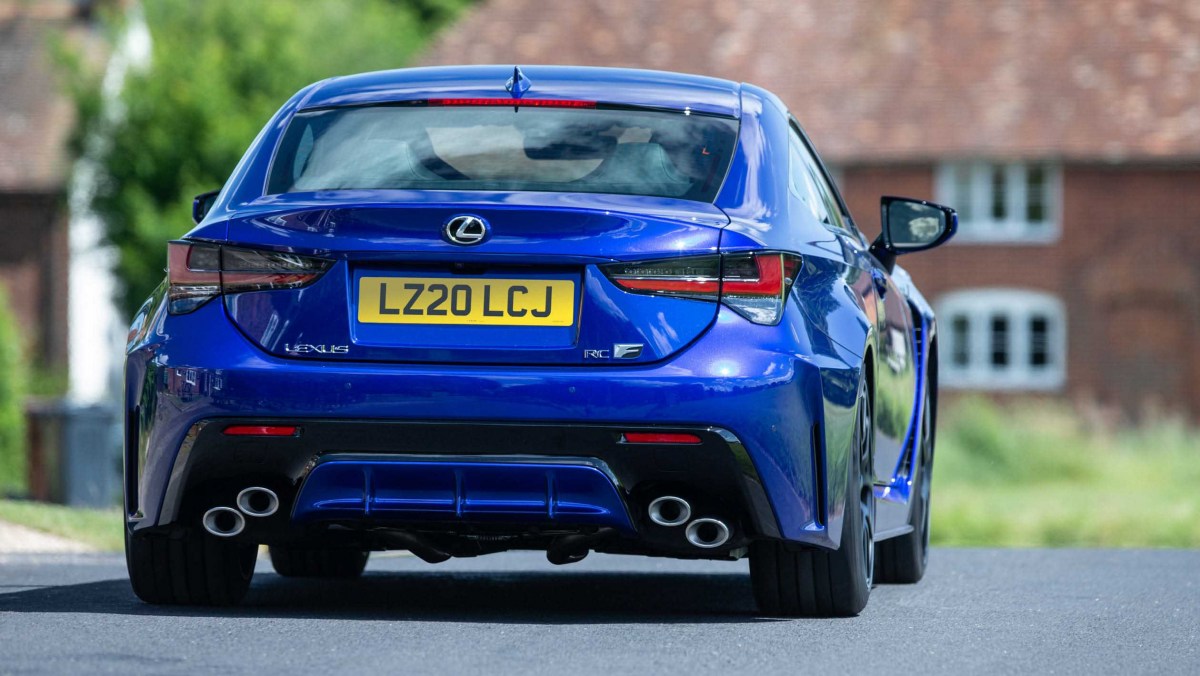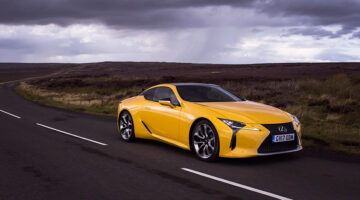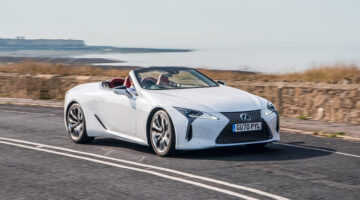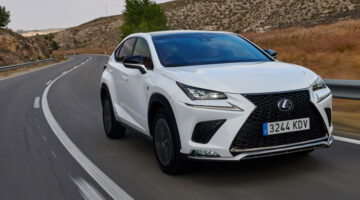The Lexus RC F might seem old fashioned, but its recipe still holds lots of appeal
| A masterpiece of internal combustion under the bonnet | |
| Can feel cumbersome and a little unsophisticated. Infuriating infotainment. |
In objective terms, the Lexus RC F is not a class-leading sports coupe. It’s not as crisp as the F82 BMW M4, as rounded as an Audi RS5, nor as brutally fast as a Mercedes-AMG C63 S Coupe. Its price-point isn’t far from its more able rivals either, so there’s not even a serious value-for-money benefit to consider.
And yet, the Lexus RC F occupies a high place in our affections because the thrill of driving is not always about outright ability or figures on a spec sheet. The RC F is about more than that. Its desirability is derived from an increasingly rare combination of elements that really do make it a unique entity in the new car marketplace, for now.
The wild styling helps, so too its rarity, but the Lexus RC F’s biggest asset is the jewel under its bonnet. The 4969 cubic centimetres of naturally aspirated Japanese V8 that not only dominates the RC F, but in 2021 defines it in a way that appeals to us more than acceleration times or, heaven forbid, L/100km figures. It’s not perfect, but it remains the centrepoint of a package that pulls on the heartstrings like few others.
> All-new BMW M4 Competition revealed – next generation super coupe debuts
Prices, specs and rivals
A basic RC F costs from $88,199 – just a touch below the most affordable of its German rivals. For that price, kit levels are strong, with highlights including 19-inch wheels, six-piston Brembo front brakes, adaptive dampers, LED lights all around, heated and cooled nappa leather and Alcantara interior trim, and a retractable rear wing. The RC F Carbon costs an extra $1000 and features a roof skin, bonnet and rear spoiler made from – you guessed it – carbonfibre.
New for the 2019 model year was the Track Edition, which might cost a further $14,000 at a pretty serious $111,434, but adds a higher, fixed rear wing, more boisterous interior trim, forged BBS alloy wheels, a torque-vectoring rear differential (TVD) and carbon-ceramic brakes. Lexus only brought a limited number to the region, but if you missed out (or if that wing is a little strong for you) there is an optional Track Pack available on the rest of the range that adds the forged wheels, carbon-ceramics and TVD for $13,598.
Most of the Lexus’s main rivals are from Germany, yet the class is not quite as clear-cut as it was at the time of the RC F’s launch back in 2014. The BMW M4 is the most obvious rival, and in $94,015 Competition specification – the only version currently available – remains the class leader in terms of its dynamic excellence and the all-round entertainment it offers. It’s more aggressive than the RC F – the twin-turbocharged straight-six, although 26bhp down on the Lexus’s V8, is rabid by comparison, but also trickier to manage, too. This also helps the German car feel sharper, more agile and more exciting more of the time.
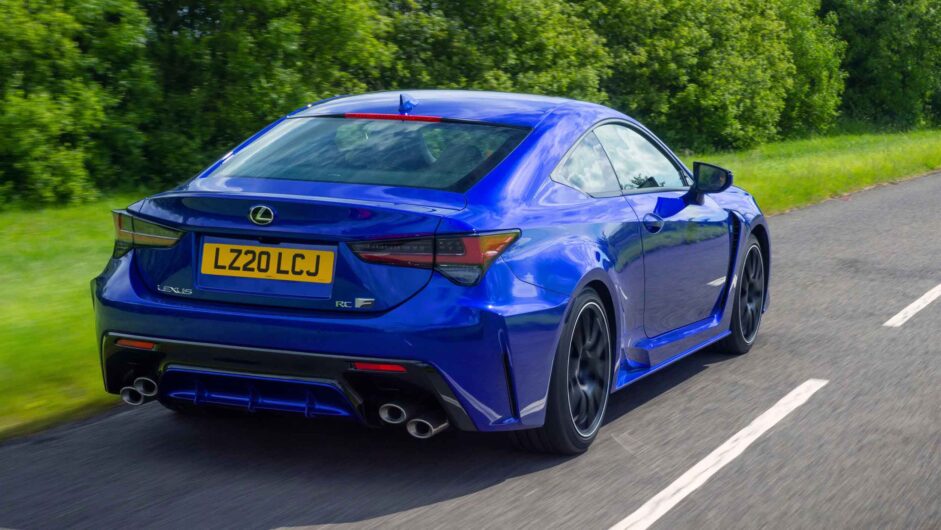
Audi’s RS5 is more of a rounded sporting GT than an out-and-out sports coupe, with huge amounts of four-wheel-drive traction and a powerful, smooth and torquey twin-turbo V6 engine with 444bhp. The chassis is deftly balanced and capable of inhaling the worst British B-roads thanks to some well judged damping, but the RS5 is perhaps not as immediately exciting as its rivals, the Lexus included. At $95,507, it’s an expensive entry compared to the Lexus, but very well specified to compensate.
If muscle and brawn are more your style then the Mercedes-AMG C63 Coupe could be right up your street. Like the Lexus, the AMG has a V8, but adds two turbochargers nestled between the banks of cylinders, adding both power and torque. In ‘S’ form, the AMG peaks at 503bhp, with 516lb ft of torque, so although it isn’t much lighter than the RC F at 1725kg, it hits 100kph in just 3.9sec, 0.4sec faster. You pay for such pace, though: the two-door S will set you back $114,356 before you even look at the options list.
Finally, it may not be a coupe, but don’t discount the Alfa Romeo Giulia Quadrifoglio. It matches the Mercedes for power and acceleration, the BMW for precision and agility, and beats everything in terms of fun and on-road pace. And it’s competitively priced, too, at $93,715.
Performance and 0-100 time
Have you driven a brisk hot hatch recently? Something like a Golf R or a Mercedes-AMG A45? Because if you have, the RC F might initially feel somewhat disappointing. Instant gratification is not the game here, as when mooching around at low revs that naturally aspirated V8 doesn’t really have much in the way of performance. It’s not unresponsive, as throttle response is very crisp, it just doesn’t pack much instant punch.
Commit to the throttle, though, and the urge is there, as once the 5-litre engine has filled its lungs, the numbers start to pile on. Keep the throttle pinned and the RC F will top out at a limited 270kph. The claimed 0-100kph acceleration time is 4.3sec, an impressive number in isolation, and on a par with the previous-generation BMW M4 (4.3sec), but quite a bit behind the Audi RS5 and Mercedes-AMG C63 S Coupe (both 3.9sec)
Around one of Bedford Autodrome’s smaller loops the RC F trailed a regular F82 M4, without the Competition upgrades, by 0.35sec and the old, heavier, less powerful, naturally aspirated Audi RS5 by 3.35sec.
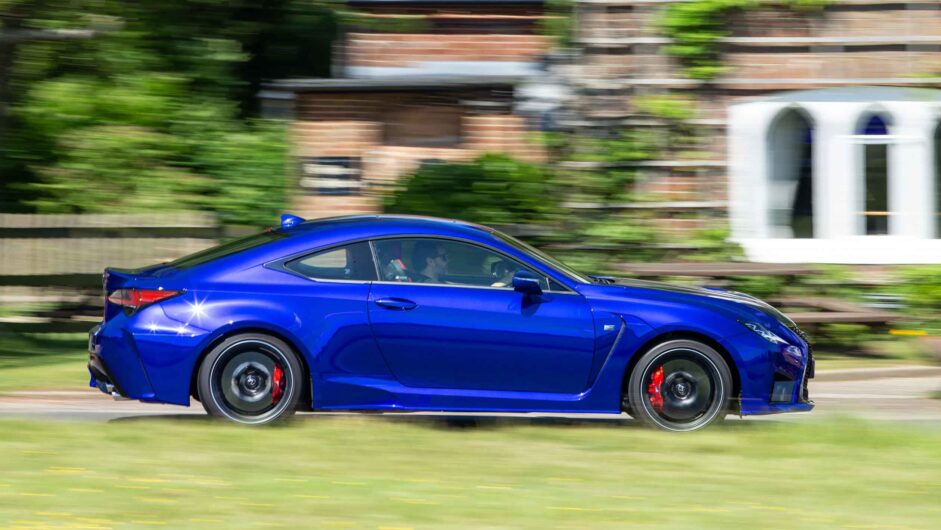
Engine and gearbox
Given that the engine is the bit makes the RC F so special, it’s worth going into a bit more detail about why it’s so wonderful. At 4969cc, by modern standards it’s a big-capacity unit, and unusual in being naturally aspirated. It’s built by Toyota and used in a variety of different models across mostly American markets, but in Lexus-specific ‘2UR-GSE’ form this V8 has a substantial amount of bespoke engineering applied to it. The main differentiator from lesser Toyota V8s is the Yamaha-designed head, titanium valves, high-lift cams and a dual-length intake.
Although it lacks a screaming red line (7100rpm is all the engine has to give) it’s the lightweight internals and induction switch that makes the 2UR feel like more than just a luxury-car engine. It feels honed and crafted, and is clearly from a company that knows a thing or two about acoustics – Yamaha. Put your foot down with Sport S, or even better Sport S+ mode activated, and the background burble is replaced with a fantastic bark – one unique to the 2UR and which seems to amalgamate the bassy, off-beat thrum of a traditional V8 with a polished yet still motorsport-like howl.
> Lexus LC500 review – the class of the big coupe field
Little of the volume actually emanates from the exhausts – the supposedly more cultured LC 500 that features the same unit is more muscle car-like in its voice – but it’s still a highly satisfying noise that can’t help but elicit a smile. It doesn’t rev to the heights of a BMW S62 V8 perhaps, nor does it have quite the tingly response of a Volkswagen Group V10, but in this class, at this price point, its a far more exciting and satisfying powertrain than the turbocharged motors of its rivals.
The eight-speed automatic transmission is less of a highlight, and although it doesn’t subtract from the powertrain’s brilliance, neither does it accentuate it like a good dual-clutch unit might. While mooching about, the auto slips in and out of ratios with noticeably less decisiveness than you get from the best modern torque converters. Increase the pace and it does sharpen up, and with a sportier mode selected it’ll feel more alert still, with sharp, blipping downshifts, although it still lacks the final layer of crispness found in rival transmissions.
Ride and handling
Slide into the cabin and the driving position takes a little getting used to. It’s not particularly low, but the view out feels slightly obstructed, as if the scuttle is too high. It’s somewhat reminiscent of being in a TVR or Aston Martin, and exaggerated by the strip of bonnet visible from the front seats. Drive away and the stiff accelerator pedal motion, relatively heavy steering and lumpen low-speed ride only add to the cumbersome feeling.
However, as speed rises, over 70-80kph, the suspension seems to find its range and begins to flow in a more dignified manner than your first impressions suggest it might. The new adaptive dampers have usefully increased the amount of body support over larger undulations: where before the body would have begun to lose some of its composure, it now hunkers down and better utilises the suspension travel. The lowered unsprung weight afforded by the Track Pack’s forged wheels and carbon-ceramic brakes helps here too, giving you extra confidence that the car will not be knocked off-line when things get rough.
That same fluidity is maintained through longer, wider corners, and regardless of damper mode the RC F settles onto a well-supported outer-rear corner, the throttle allowing just a slight influence over the car’s attitude. If this all sounds a little flat, there is a remedy: drive through the heavy control weights, become more liberal with your inputs, and the RC F responds accordingly, switching from chunky GT to something more sports car-like.
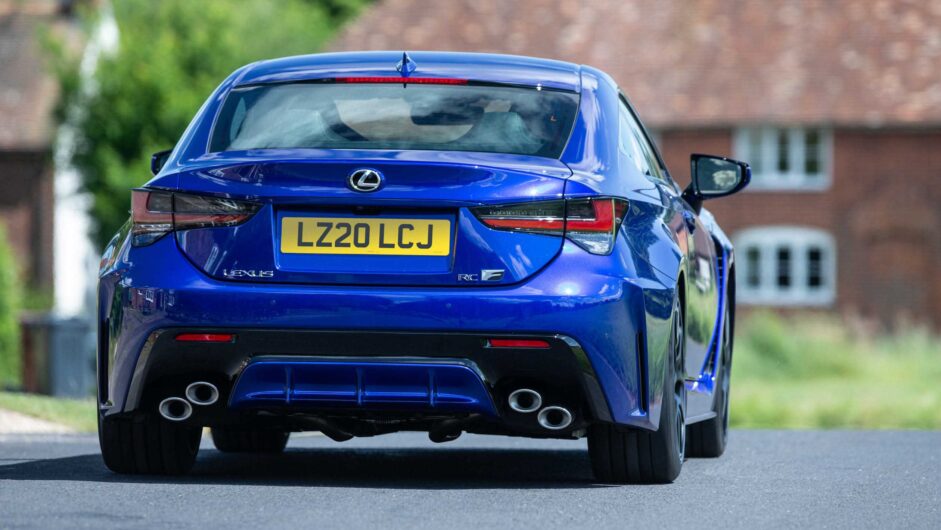
If you want more freedom to exploit the engine’s top-end power and the super-accurate control it grants you in slower corners, you can switch the stability control (or VDIM – Vehicle Dynamics Integrated Management – in Lexus-speak) fully off, or there’s also an ‘Expert’ mode in which the electronics take a back seat and only intervene to prevent a spin.
We’ve only driven RC Fs with the optional TVD differential. In its Standard and Slalom modes it can be frustrating at higher speeds, taking its time to engage and allows the inside rear wheel to spin and saps away at your momentum. On the occasions it does lock, it then tries to quell any slide before you’ve had chance to enjoy it or react to it. It’s the final, most focused Track setting that provides the most natural responses, the diff engaging as soon as you touch the throttle and staying locked as you dictate your angle of slide with the throttle. It can easily be kept small and tidy or pushed large and boisterous depending on how much throttle you choose to use.
The RC F is not as talented dynamically as an F82 M4, as capable as an RS5, or as boisterous and lairy as a Mercedes-AMG C63 S, but it is certainly gratifying, and because you’re never quite carrying the sheer speed of those German rivals, it feels more exploitative on the road.
L/100km and running costs
When we ran a Lexus RC F in our long-term Fast Fleet, matching Lexus’s official combined L/100km figure of 26.2 proved tricky; we averaged around 12.8L/100km . For comparison, our long-term Audi RS5 averaged 10.8L/100km against an official claim of 8.7L/100km.
With the RC F being so comfortable going sideways, you might want to budget for the rear tyres to be replaced frequently. The 275/35 R19 Michelin Pilot Super Sport tyres that are standard fitment on the back of the RC F cost around $350 each, fitted.
Interior and tech
Whatever else is said about the RC F’s interior, you cannot fault how it’s built. It’s constructed to such fine tolerances and with excellent-quality materials, so wobbles and rattles simply don’t exist.
How it all looks and works, however, isn’t as universally loved. The seats, with their many sinewy patches that look like exposed muscles, are set too high for some taller drivers, leading to restricted headroom. Meanwhile the grey centre console and hi-fi is so sparsely populated with buttons that the evo team has described it as both ‘boring’ and also the perfect example of Dieter Rams’ ‘as little design as possible’ philosophy. You’ll have to make your own mind up about it.
Programming the satnav, connecting your phone via Bluetooth or changing radio stations has been vexing for almost everyone that’s attempted to interact with the RC F’s infotainment system. As much as we may applaud Lexus for being different in certain areas, we’d rather have a more conventional and intuitive entertainment system in the RC F.
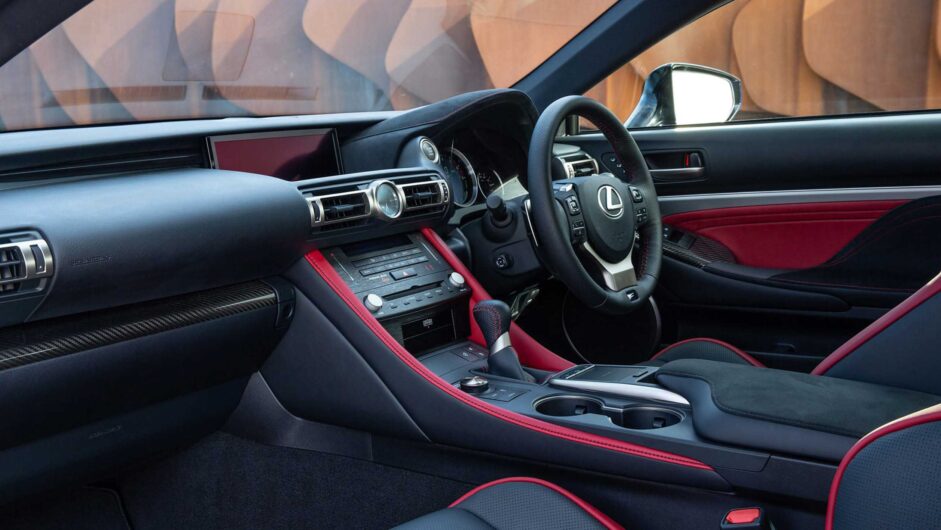
Design
The RC F’s 2019 facelift may not have considerably changed the divisive looks from a distance, but it usefully sharpened certain somewhat clumsy details of the previous model. The one-piece headlights aren’t quite as contrived as the previous units, which from some angles seemed to melt into the sometimes flabby bodywork surrounding them.
The rear lights also switched to all-LED units that sit more proud of the car’s outer corners. The ‘L’ graphic in the rear lights is more defined, while the smoked elements add more aggression to the rear end. The distinctive diagonally stacked exhausts also remain, and although a little overwhelmed in size by the sheer visual mass of the car, they certainly help make the RC F look more exotic and exciting than its sometimes sterile German rivals.
The Carbon and Track Edition cars add a tuner-like aspect to the styling, which depending on your aesthetic leanings is either crude or a brilliantly contrast to the RC-F’s ornate detailing. Regardless of trim, the aesthetics are certainly helped by the Track Edition’s forged BBS wheels, which finally have enough visual heft to carry the chunky body.
This article originally appeared at evo.co.uk
Copyright © evo UK, Dennis Publishing

